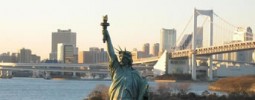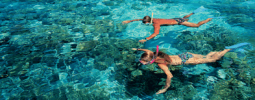Kraljevo (Краљево) is a city and municipality in the Republic of Serbia. The city is located on the river banks of Ibar about 4.5 miles from its confluence with the Zapadna Morava, and in the middle of an valley with the Kotlenik Mountains to the north, and Stolovi Mountains in the south. As of latest measurement the city has a population of 100 thousand people.
In the last decade Kraljevo has become a remarkable travel destination for lovers of Serbian culture and history. For example the city has several famous museums and art galleries like the National Museum, founded in 1950 which collects and features exhibits documents and archaeological, ethnological and art collections. As well the New Gallery, which was the former grammar school that has become a prominent space for exhibitions and scientific meetings. Another valuable sightseeing is the Institute for Protection of Cultural Heritage where numerous medieval Serbian buildings are gathered together in between venerable monuments.
Besides culture and history sightseeing, the city of Kraljevo also offers several areas for relaxing like the local beach at the banks of the Ibar, aside the beach there’s a boulevard with sporting areas filled with restaurants offering brilliant local cuisine and a nice view over the beach and river.
American and European citizens aren’t required a Visa to enter Kraljevo when the duration of the stay does not exceed 90 days. A valid passport is that’s valid for at least 6 months needs to be shown upon arrival to the immigration officers at the international airport. Tourists are required by law to register with the Serbian police within 24 hours after entering the Serbian border.
Niš (Ниш) is a city in the Nišava District, Serbia situated on the banks of the Nišava River. The city of Nis also has its own international airport named Niš Constantine the Great Airport (Аеродром Константин Велики) with as destination code INI. With a little over 300 thousand people as population it’s the third largest city in southern Serbia after Beograd and Novi Sad.
Unfortunately Nis suffers from a variety of accommodations, there’s a short supply. The major hotels are “Ambassador” and “Motel Nais”, in all honesty, generally seen the private and small hotels are in much better shape. A couple of recommended hostels by travelers include Hostel Evropa, Marvel, Hotel Nis and Sweet-Hostel Nis. If you inquire any issues finding a room in Nis, step in one of the many tourist agencies which have local contacts.
As the city was heavily damaged in the second world war only a few pre-war architecture remain. There’s a few interesting sightseeing’s like the ancient monument from the Turkish-Serbian war called The Scull Tower. Another few interesting attraction includes Turkish Fortress in the city center, and an archeological site “Mediana” which features a summer residence of the Romane Emperor Constantine the Great. A small archeological museum “Narodni Muzej” can be found in city center.
The city of Nis has a lot of domestic travelers common referred to as “health tourists”, an popular destination includes the Niska Banja Spa. Besides health freaks, the city is suitable for all sorts of people, whether you enjoy a lively nightlife with a large numbers cafeteria packed in the afternoon and evenings, or like fine dining at local restaurants serving original Serbian cuisine, Greek or Turkish meals and desserts.
Getting round in the city isn’t of any problem, taxi’s and public transport is widely available. When travel abroad to other major European cities tickets can be purchased at the main bus station. As earlier mentioned the city Nis has a international airport which has daily flights to Zurich and Paris. Currently the airport is only served by two airlines, Montenegro Airlines and JAT Airways.
American and European citizens aren’t required a Visa to enter Nis when the duration of your stay does not exceed 90 days. A valid passport is that’s valid for at least 6 months needs to be shown upon arrival at the international airport. Tourists are required by law to register with the Serbian police within 24 hours after entering the Serbian border.
Čačak (Чачак) is a city situated 86 miles south of capital city Beograd in Serbia. The city of Cacak is the administrative as well main industrial, cultural and sport center of the Moravica District. As of latest count the city has an population of 170 thousand people.
When taking a walk in downtown Cacak there’s many narrow streets going left and right connected together, the city map looks like a labyrinth. As Cacak tries to improve their tourist hospitality and attractions they have opened countless breathtaking summer gardens just around the corners of cultural and historical Serbian cuisine restaurants, where even the restaurants designs seems to come from the nineteenth century. As both the summer gardens and a visit to one of the many restaurants need to be checked on your check list be sure to visit the great number of stores, shopping malls and hypermarkets, which makes Cacak the leading shopping center in Serbia, after Belgrade. When getting hungry during endless shopping, make sure to try the Serbian fast food snack “pljeskavica” which is a giant beef burger served at minimum size of 150 grams.
What attracts most tourist to the city of Cacak is the geographic location on the river bank, it’s diversity, traditions, historical monuments, cultural establishments, entertainment and sporting manifestations. For tourists its rather easy to get in touch with the locals, meet them and learn about their history and tradition as the local Serbians are very friendly and welcoming people, Cacak is a place to forge new friendships and enjoy nature at the same time.
American and European citizens aren’t required a Visa to enter Serbia or Cacak if your visit does not exceed 90 days. A valid passport is that’s valid for at least 6 months needs to be shown upon arrival at the international airport. Tourists are required by law to register with the Serbian police within 24 hours after entering the Serbian border.
Novi Sad (Нови Сад) is the capital city of the Serbian province Vojvodina located in the north of the country, and also the administrative center of the South Bačka District. Novi Sad is situated on both banks of the Danube river and is Serbia‘s second largest city, after Beograd, the country’s capital. The current population of Novi Sad counts 290 thousand people.
The city of Novi Sad is an easy reach by bus or train from Belgrade, within a few hours you’re in what’s today the historical center of Serbian culture. For overnight stays there’s a wide selection of choices including, camping, pension or a hotel room. Walking around Novi Sad gives a pleasant feeling, strolling over the wide boulevards with buildings from the early nineteenth century, its central square surrounded by an old City Hall on the opposite side of an Roman Catholic church.
Since it’s a city of size, locals as well tourists won’t get bored easily, just the several historical museums and art galleries in town mixed with theaters and cinemas fill up the most of travelers needs. And how about a lively clubbing scene, that’s pretty much every night going with Fridays and Saturdays running at top. Another popular tourist attraction in the city of Novi Sad is the Exit Summer Fest which is the largest music festival in South Eastern Europe taking place on a beautiful fortress named Petrovaradinska tvrdjava. This festival attracts thousands of travelers enjoying the performance of the world’s most popular DJs and rock bands.
American citizens do not require a Visa to enter Serbia or Novi Sad. A valid passport is all that is needed to enter Novi Sad for any stay that doesn’t exceed 90 days. Tourists are required by law to register with the Serbian police within 24 hours after entering the Serbian border.
Beograd (Београд), the capital of Serbia sits on the Balkan Peninsula, at the junction of the Sava and the Danube Rivers. The city is home to 1.6 million people and is the major hub for trade, communications, science and technology and tourism in Serbia. The city, popularly known as Belgrade, is known to locals as Beograd, its historical name. Belgrade is the largest city in Serbia after Novi Sad.
Beograd Serbia enjoys its location in the middle of the other Serbian towns and cities, making it easily accessible from any point in Serbia. Beograd locals, no stranger to the woes of the Balkan wars, are a hardy group whose hospitality is unsurpassed anywhere in the Balkan Peninsula. The people of Belgrade are slowly transforming their city into a center for entertainment and commerce, a place where locals and visitors can soak up the Mediterranean sun while lounging in seaside cafes during the day and revel in the vibrant nightlife after sundown, with parties spilling from the city’s trendy bars to the boats moored on the river, and where music floats until the sun breaks from the Bohemian enclave.
Public transportation leaves much to be desired in Beograd, although tourists can also hire rentals for a more personalized experience of the city. Those who are new to Serbia may also feel safer traveling by taxi or bus. It is better to be careful when going to public places which are notorious for pickpockets and thieves like the Republic Square and train stations. The best time to make your visit is between late spring and early autumn. Winter visits are also good, since winters in Belgrade can be cold but not harsh.
American citizens do not require a Visa to enter Belgrade. A valid passport is all that is needed for a stay in Belgrade for no longer than 90 days. Tourists are required by law to register with the Serbian police within 24 hours after entering the Serbian border.








